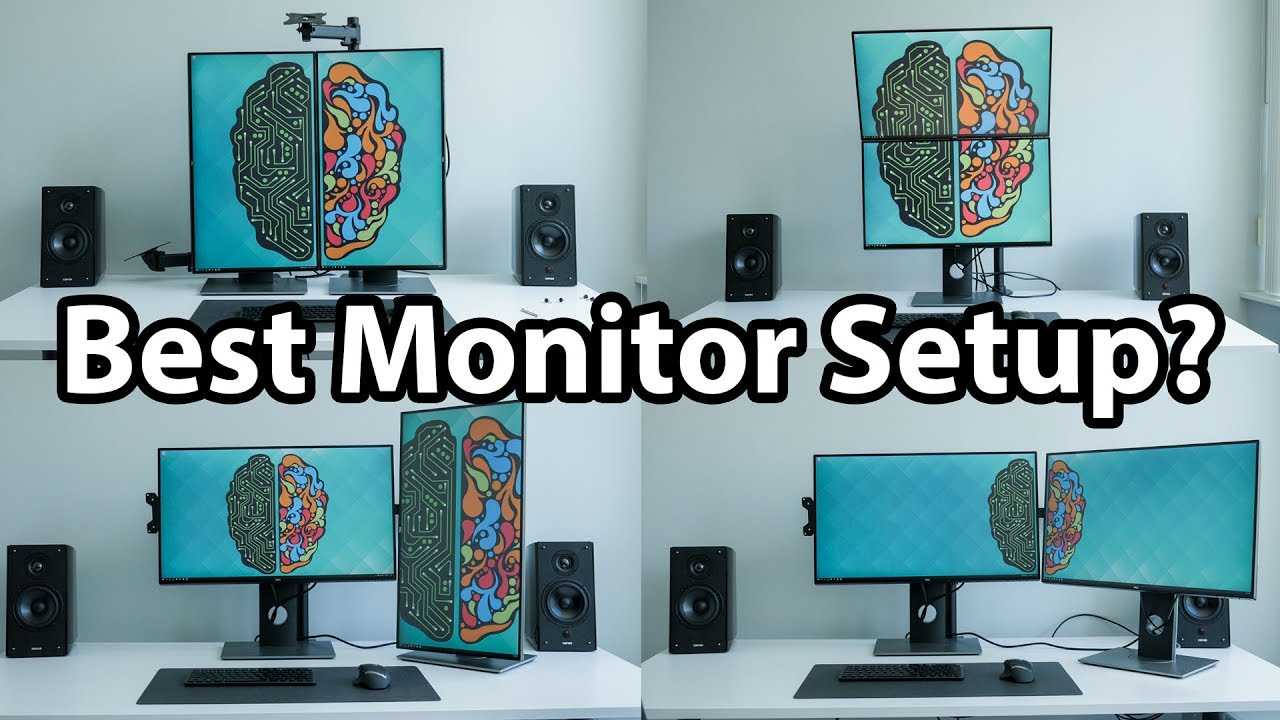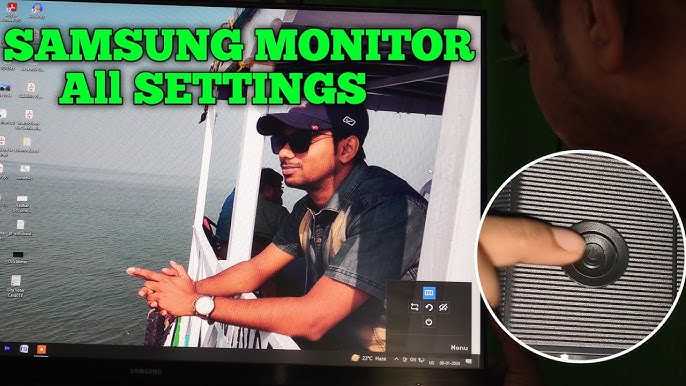The easiest way to double your productivity and make multitasking a breeze is by setting up dual monitors seamlessly. The best method depends on your computer’s ports and your specific needs, but generally, using the right cables and proper configuration ensures a smooth multi-screen experience. For most users, connecting two monitors involves checking available video outputs, selecting compatible cables, and adjusting display settings to extend or mirror your desktop.
In just a few steps — identify your computer’s video ports, choose suitable cables, connect your monitors, and configure display settings — you can enjoy the benefits of a dual monitor setup quickly and easily. This setup not only boosts efficiency but also makes multitasking more comfortable and organized, whether you’re working, gaming, or creating content.
Getting dual monitors up and running can seem tricky at first, but with the right approach, it becomes second nature. The key is understanding your device’s output options—like HDMI, DisplayPort, VGA, or DVI—and choosing the best cables to connect each monitor. Once connected, adjusting display settings through your operating system will allow you to extend your desktop, giving you more space and better workflow. Whether you’re a student, professional, or gamer, setting up dual monitors can transform how you use your computer daily.
Best Way to Hook Up Dual Monitors
Understanding Your Hardware Setup
To connect two monitors successfully, you first need to understand your computer’s hardware. Look at your graphics card and identify the available video output ports. Common ports include HDMI, DisplayPort, DVI, and VGA. Not all computers support dual monitors out of the box, so checking your system’s specifications is essential.
Checking Compatibility of Monitors and Ports
Each monitor has specific input ports, and your computer must have matching outputs. For example, if your monitor has an HDMI port, your PC should have an HDMI output. If you have different ports, adapters can help bridge the connection. Always verify that your graphics card supports multiple displays for the best experience.
Selecting the Right Cables and Adapters
Choosing the correct cables is crucial for a smooth setup. Use high-quality HDMI or DisplayPort cables for the best resolution and refresh rate. If your computer has limited ports, consider adapters such as HDMI to VGA or DisplayPort to DVI. These adapters are affordable and widely available, but opt for active adapters when connecting different types of ports for better performance.
Connecting Your Dual Monitors
Start by turning off your computer before plugging in cables. Connect each monitor to a different port on your graphics card. Once connected, turn on your computer and wait for it to detect the new hardware automatically. If a monitor isn’t displaying correctly, double-check the cable connections and ensure the monitor is set to the correct input source.
Configuring Display Settings in Windows
After connecting your monitors, access display settings by right-clicking on your desktop and selecting “Display settings.” Here, you can choose how to extend or duplicate your screens. Windows allows you to change resolution, orientation, and which monitor is primary. Use the “Identify” button to see which monitor is which and position them accordingly for seamless movement.
Adjusting Display Arrangement for Optimal Workflow
Arrange your monitors in the display settings to match their physical placement on your desk. Drag and drop the monitor icons to align their edges properly, making cursor movement smooth. Setting the primary monitor is important if you want taskbars and icons to appear there first. Proper setup minimizes frustration and enhances productivity.
Optimizing Display Resolution and Refresh Rates
Set each monitor to its native resolution for the clearest image. You may want to match refresh rates for consistent performance; for example, both monitors at 60Hz. Higher refresh rates, such as 120Hz or 144Hz, are ideal for gaming or fast-moving visuals, but ensure your hardware supports these settings.
Managing Multiple Displays in MacOS and Other Operating Systems
If you use a Mac, access the “Displays” section in System Preferences to configure your monitors. Similar options are available for Linux and other operating systems. Each OS offers tools to extend, mirror, or set specific display arrangements, providing flexibility to suit your workflow.
Using Docking Stations and External Adapters
For laptops or computers with limited ports, docking stations are a smart solution. They connect via a single USB-C or Thunderbolt port and provide multiple video outputs. External adapters convert USB-C or USB-A to HDMI, DisplayPort, or VGA. These accessories can simplify setup and ensure stable connections.
Cable Management Tips for a Clean Workspace
Keep cables organized using clips, sleeves, or ties to prevent clutter. Proper cable management not only improves aesthetics but also helps maintain stable connections. Use long enough cables to comfortably reach your monitors without pulling or stressing ports.
Troubleshooting Common Dual Monitor Issues
If one monitor isn’t detected, restart your computer after confirming all connections are secure. Check display settings and update your graphics driver if needed. Sometimes, simply unplugging and re-plugging the cables or trying different ports resolves connectivity problems. Keep your drivers up to date for the best compatibility.
Additional Tips for Enhancing Multi-Monitor Use
Use keyboard shortcuts like Windows Key + P to quickly toggle display modes. Consider setting specific wallpapers for each monitor for a personalized touch. Adjust color calibration settings to ensure uniform display quality across both screens. These minor tweaks can significantly improve your overall experience.
Related Topics to Explore
Explore the benefits of ultrawide monitors, which can replace dual setups. Learn about monitor calibration for color accuracy, especially useful for creative work. Discover the best software tools for managing multiple displays efficiently and increasing productivity. These topics complement your dual monitor setup and expand your workspace capabilities.
This comprehensive approach ensures your dual monitor setup is optimized for performance and ease of use. Whether for work, gaming, or daily browsing, following these steps makes connecting and configuring two screens straightforward and efficient.
How To Connect Two Monitors To One Computer – 30 Second Guide
Frequently Asked Questions
What are the essential steps to set up dual monitors effectively?
Setting up dual monitors starts with selecting compatible displays and ensuring your computer has the necessary ports. Connect each monitor using the appropriate cables, such as HDMI, DisplayPort, or VGA. Once connected, power on both monitors and access your computer’s display settings to extend or duplicate your desktop. Adjust resolution and orientation for each screen to optimize your workspace. Confirm that your graphics card supports multiple displays and update your drivers if needed for smooth performance.
How can I ensure my graphics card supports dual monitor setups?
Check your graphics card’s specifications to verify the number of supported displays. Most modern GPUs can handle at least two monitors; this information is usually available on the manufacturer’s website or in the user manual. If your current card lacks support, consider upgrading to a model with multiple video outputs and better performance capabilities. Installing the latest graphics drivers also helps ensure compatibility and optimal functioning with multiple monitors.
What are the best cable options for connecting dual monitors?
Choose cables that match your monitors and computer’s output ports for the best quality. HDMI and DisplayPort are common choices for high-definition displays, offering reliable connections and support for higher resolutions. DVI and VGA cables work for older monitors, although they might not support the highest resolutions. Using high-quality cables minimizes signal loss and interference, ensuring clear images across both screens.
How can I configure display settings to maximize productivity?
Access your operating system’s display settings to arrange your monitors in the desired layout. Drag and position the virtual screens to match their physical placement on your desk for seamless cursor movement. Adjust the resolution and scaling options for each monitor to ensure sharp visuals and comfortable text size. Setting one monitor as the primary display allows you to designate where taskbars and icons primarily appear, enhancing workflow efficiency.
What troubleshooting tips can help resolve common dual monitor issues?
If one monitor isn’t displaying correctly, verify all cable connections and ensure they are secure. Restart your computer after connecting new displays to allow recognition. Update your graphics card drivers to address compatibility issues. If screens are mismatched or flickering, adjust the resolution and refresh rate settings in display options. In case of persistent problems, testing the monitors on another device can help identify hardware faults or faulty cables.
Final Thoughts
The best way to hook up dual monitors involves choosing the right cables and compatible ports on your device. Verify whether your computer has HDMI, DisplayPort, or VGA outputs to ensure a seamless connection. Use high-quality cables to avoid image issues and enjoy a stable setup. Properly configuring display settings in your operating system maximizes multitasking efficiency. By following these steps, you can set up your dual monitors quickly and effectively.
I’m passionate about hardware, especially laptops, monitors, and home office gear. I share reviews and practical advice to help readers choose the right devices and get the best performance.





